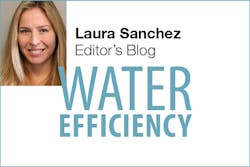There’s a concrete channel across the street from my home. Though usually dry, heavy rains have brought muddy water down its beige gullet all week, temporarily displacing the urban ducks.
Although the channel’s reinforced sides offer significant peace of mind during rainstorms and mudflow, I recognize that the stream was once a natural waterway, alive with microorganisms, algae, and fish. One glance over the chain link fencing at the soupy surge of stormwater below is all it takes to understand the delicate equilibrium between hard and soft infrastructure that cities in America face as they balance immediate safety and long-term sustainability.
A captivating article by Brynn O’Donnell in Popular Science recently reminded me of the fact that beneath the asphalt of every city lie “ghost streams;” waterways that have been paved over. These streams, the author points out, carry water with urban pollutants and high nutrient concentrations downstream. While concrete barriers effectively guide water flow, they don’t allow for the natural dispersal of materials along a streambed.
In natural stream systems, stones and microorganisms, supported by soil and sunlight, help remove sediment and nutrients, whereas in channelized streams, urban runoff is funneled downstream and released into larger water systems.
It’s interesting to consider both the history and function of these buried waterways as we weigh their benefits and drawbacks. Clearly hard infrastructure is critical for carrying away stormwater and protecting communities. But natural streambeds offer numerous long-term environmental benefits as well. How can US cities establish a better balance of gray and green infrastructure? Does that involve exhuming some of these buried streams? Perhaps for the ducks’ sake.
